Keywords: Slavs; Bulgarians; Timocans; Abodrits; the Danubian Basin
The Annals of the Frankish kingdom, under the year 818, contain a description of the arrival of legations of certain Abodrits, Guduskans and Timo~ans at the Frankish court in Heristal. This paper is devoted to an attempt at the further identification of these tribes and their habitats. It mainly discusses the possibility that the Timočans and Abodrits should be recognized as two of the so-called Seven Slavic tribes, over whom the Bulgarians imposed their power in 680/681. The final part of the paper is dedicated to an overview of the question of the expansion of Bulgarian authority in the area of the Morava River valley.
More...In the last few years of the 16th century and in early 17th century, Hasan Kāfī b. Tūrhān b. Dāwūd b. Ya‘qūb az-Zībī al-Āqhīsārī al-Bosnawī was the most prominent person in the scientific and literary life of Bosnian Muslims. He acquired this reputation through fruitful and versatile literary and scientific activity. This was contributed by his school and his endowment (waqf) in Akhisar (Prusac, Central Bosnia). Kāfī’s work Usūl al-hikam fi nizām al ‘ālam, which deals with the issues of state and social order, attracted the French Orientalist Garcin de Tassy (Garcin de Tassy, Principes de sagesse touchant l’art de gouverner, par Rizwan-ben abd ‘oul Ac-hisari, Journal Asiatiqe IV, 1824, pp. 213-226, 283-290) who made him accessible to western researchers. Since then, until today, though to a limited extent, Kāfī has been in the focus of interest of both eastern and western researchers. In this paper, the author tried to collect sources and literature on Hasan Kāfī and thus enrich his biography. Hasan Kāfī was born in Prusac in late November or early December 1544 (Ramandan 951 h.). He started using the name Kāfī (mahlas) in 988/1580.Following primary and secondary education, he departed for Istanbul in 1566 for further education, and he stayed there until 983/1575. He then returned home and worked as a teacher, in addition to writing. His first writing was a short philological discussion on the sense and use of the word čelebi (Risāla fī tahqīq lafz Čalabī), then a short paper on logic. The qadi of Sarajevo, Bali effendi, employed him to assist in researching the teaching of Bosnian Hamzawis, in order to combat them. After the death of Bali effendi, (1582/999) he returned to Prusac and lectured there, and in 1583/991 he was appointed qadi. At the same time, he wrote a comment on his earlier writing on logic. In order to be reappointed as qadi, in 1585/994 he wrote a paper on civil proceedings, which was to serve as his habilitation. It is also known that in 996/1588 he wrote his Hadīqat as-salāt, and he spent some time in Istanbul again. He was later appointed qadi in Sirmium, where he served and also lectured, and where he wrote his Introduction to Islamic Law – Samt al-wusūl ilā ‘ilm al-usūl. He went to Mecca to perform his hajj in 1591-2/1000.
More...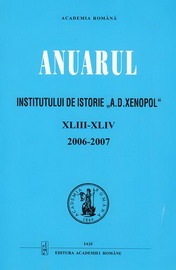
Keywords: Hungarian Crisis; Wladislaw II Jagiello; Stephen the Great
The Hungarian Crisis of 1490 represents yet another turning point in the very tormented history of 15th century. The failure of Frederic III and Maximilian I of Habsburg, and that of John Corvinus, the illegitimate son of the late Hungarian King Mathias, to secure the Hungarian throne was to dramatically increase the weaknesses of the Hungarian political system, under the rule of Wladislaw II Jagiello, who was elected and crowned king. In these events a major part, now brought into a clearer light by a new document, was played by Stephen the Great of Moldavia.
More...Keywords: Renaissance; sixteenth century; travel writing; apodemic literature, pilgrimages; travelogue; Bartul Đurđević; Bonifacije Stijepović Drakolica; Holy Land
The author discusses several specific forms of Renaissance travelogues in the sixteenth century. The introduction provides a short survey of the development of travelogue genre in the Antiquity and Middle Ages. Special attention is paid to the pilgrimage texts, a form that did not change substantially in the Renaissance although some influences of the hodoeporical texts (highly elaborate travel theory specific for the Renaissance period) can be noted. The author analyzes two pilgrimage texts by Croatian authors, Bartol Đurđević and Bonifacije Stijepović Drakolica, as illustrations of this old travelogue form. The second part of the essay focuses on the examination of a system of hodoeporical or apodemical texts, a large series of theoretical texts. Some of them are similar to travel manuals as they aim to classify all extant aspects of travel, enlighten, advise and in every way accompany the Renaissance traveller on his way. In the third part, the author examines administrative travel notes, some of them written for political leaders and some by church administrators, bishops or parish priests. The article concludes with Justin Stagl’s thoughts on the history of travel as, basically, a history of curiosity.
More...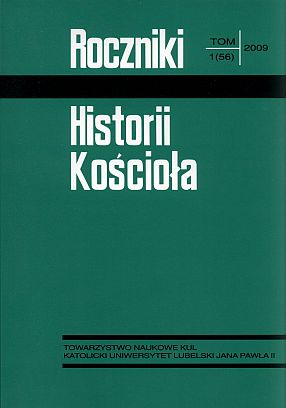
Keywords: Priesthood; celibacy; Church Fathers; early Christian writers
The Author of the publication departed from the classic division of the patrology periods and applied a mixed chronological and geographical criterion in order to emphasize the ideas that had beed accompanied by the Fathers of the Church and the early Christian writers on celibacy of the clergy. The Author referred to the early fourth century (Counsil of Elvira) and then, by applying the geographical criterion, He examined the development of the whole idea of celibacy in the West and East.
More...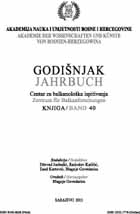
Bibliography of Godišnjak contains list of formal attributes of the articles and contributions in the 40 issues of the journal published so far. The aim of this list is to present comprehensive information of the content of all published issues. All units are described “de visu”, i.e. description is made by the insight of the original text. Preparation of bibliographies followed principles of consistency in citation of elements and comprehensiveness in approach. List is given in chronological order, from the first to the last volume, and bibliographical units are arranged in the order of their original publication. Elements of units are: data of author/s, title, title of summaryin foreign language and page numbers. Following chronological order as the rule in the caption of the each volume description, name of the journal, number of the issue, name of the editor and year of publication is given in order to avoid aggregation of same information. Specific formal characteristics of Godišnjak are that first two volumes (I – 1957 and II – 1963) were published by Institute for Balkan Studies of Scientific Society of Bosnia and Herzegovina. From 1965 (III/1) publisher of journal is Centre for Balkan Studies of the Academy of Sciences and Arts of Bosnia and Herzegovina. Citation of the numbering in the form III/1 is consistently followed until 2010 (XXXIX) when numbering is resumed to the first number and expressed by the Arabic numeral. Additionally, there has been a change of the journal format from B5 to A4. According to the insight of the bibliography in 40 volumes of Godišnjak have been published 541 contributions in the form of articles, reviews, in memoriam and chronicles. There have been published 443 articles and in the form of 18 reviews have been presented 39 publications/monographs. In the presented volumes were published 33 Chronicles of the Centre and 19 texts of in memoriam (obituary). Bibliography also includes 7 texts of preface and 13 bibliographies. Since 1957 when first volume of Godisnjak was published until 2011, journal was edited by seven editors. Articles and contributions in Godišnjak were mainly published in South Slavic languages, French, German, Italian, English, Polish and Russian, both latin and cirilic letters. In the end of the bibliography is published index of 231 authors along with the number of the bibliographical unit following the presented list. There are two occasions for the preparation and issuing of this bibliography. First is publication of the 40th issue of Godišnjak, and second is to present to a wider public a useful tool in a form of systematic review of contributions published in the Godišnjak of the Centre for Balkan Studies.
More...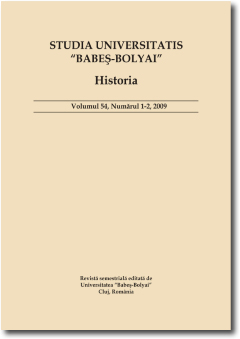
Keywords: Dakien; Lager; Soldatenkaiserzeit; spezifische Vorgänge; Vergleich; obergermanisch-raetischer Limes; Verringerung der Bestände.
The Forts of Dacia during the Time of the Soldier Emperors. I. Aspects of the Internal Architecture I discuss in this paper some issues and situations that appeared or seem to have appeared in the internal architecture of the Dacian castra at the time of the „military anarchy”. I followed mostly the significance of these situations for estimating the number of soldiers who were stationed there. Comparisons with more or less similar situations from the forts of the Germano-Raetic frontier have been made, especially with those from Germania Superior.
More...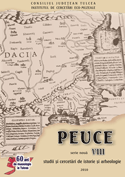
Keywords: Noviodunum; céramique fine; céramique à barbotine; technique du roughcasting; glassure de plomb; ceramică fină; decor barbotinat; tehnica roughcasting; glazură plombiferă
La présentation de ce travail se propose d’être une introduction à l’étude de la céramique fine romaine de Noviodunum. Dans ce sens les groupes de céramique décorée à la barbotine, avec la technique de roughcasting, de la céramique avec glassure de plomb constitue un aspect rare des productions et donc leur fréquence est réduite par rapport à la majorité des productions fines de poteries romaines. Les créations des centres orientaux de la Méditerranée, de la fin de l’époque hellénistique se sont répandues très rapidement aux centres du sud de l’Italie de la Grecia Magna et du nord de la Mer Noire. La céramique fine décorée à la barbotine a connu au début de l’époque romaine une évolution qui suppose, comme pour l’utilisation de la technique du moulage, une spécialisation des céramistes. En comparaison des vases réalisés au tour, technique qui permet une production de série, les vases décorés à la barbotine avec décor réalisé à la main sur les surfaces extérieures deviennent des productions uniques. Le répertoire des motifs décoratifs est constitué en général d’éléments phyto-formes, quelques-uns élaborés, d’autres très schématiques. Le lot de Noviodunum est composé de 28 exemplaires, parmi lesquels 27 ont été découverts au cours de la campagne de recherche de 1995 à 2005. Chronologiquement ces productions peuvent être datées ainsi: 9 du IIe siècle ap. J.-C. (32,14%); 12 du IIe - IIIe siècle ap. J.-C. (42,86%); 7 du IIIe siècle ap. J.-C. (42,86%). La plupart des pièces du IIe - IIIe siècle ap. J.-C. se datent essentiellement à partir des ateliers du sud de la Moesia, de Nicopolis, de Butovo, de Pavlikeni et Hotniţa qui ont une production d’exception à cette période. L’étude de la céramique à barbotine de Noviodunum met ainsi en évidence la proportion dominante de la céramique de Moesia, 23 éléments sur 28. Dont 8 du sud de la Moesia, 8 de Troemis, et 3 de Noviodunum, ce qui représente au total 82,14%. Un des ateliers occidental a produit une céramique fine particulière, décorée de grains de sable ou de céramique cuite (brûlée) selon la technique du roughcasting (copier allemand). A l’exception des verres et coupes hémisphériques (gobelets sablés et recouverts de chamotte) cette technique a été employée dans la partie occidentale de l’empire romain au cours du Ie et IIe siècle ap. J.-C. Elle a aussi été utilisée dans le cas de quelques amphores destinées au transport des olives et des fruits, ainsi que pour obtenir un aménagement intérieur granuleux des mortaria. L’utilisation de la couleur danubienne par la technique du roughcasting s’est répandue, par l’intermédiaire de la céramique fine, jusque sur les rives de la Mer Noire. La découverte de cette sorte de produit à Noviodunum, est d’après l’avis des spécialistes, étroitement corrélée avec la longue présence des troupes romaines. Comme dans le cas de la céramique arretine – présente uniquement dans le centre de Noviodunum où ont été stationnées les garnisons romaines depuis le début du Ie sièc
More...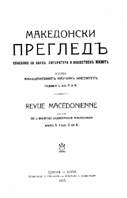
Keywords: History of Macedonia; Romanian in Macedonia; Wallachian in Macedonia; Macedonia and Romania in the twenty century
More...Keywords: infinity; Plato; Aristotle; Neoplatonism; Christianity; the Holy Trinity; existence; substance
As part of an expected further investigation into the role of infinity in stimulating contacts among religion, knowledge, and art in Western culture, the article focuses on the change in the attitude to infinity occurring in Neoplatonism and early Christianity. The overcoming of the so-called disgust with infinity, characterizing the ancient thought, must be linked largely to two factors. First, Christian monotheism provided the means for channelling the monistic (and theological) undercurrent of ancient thought, which had secretly let it drift (in Platonism) towards the positive concept of ápeiron, while retaining simultaneously a wish to offer a rational and dialectically founded explication for the world. The fitting together of these divergent ends – theological and rational – was rendered possible by a second factor, by the specifically Christian, i.e. Trinitarian, concept of God. Assisted by the seminal studies of Pierre Hadot, the present article tries to elucidate the conceptual developments and mutations underlying the emergence of the new understanding of infinity in Christian culture.
More...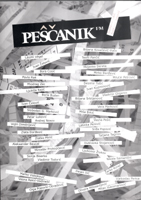
Keywords: Ratko Mladić; Vojislav Koštunica; Kosovo; church; Serbian Orthodox Church; Liberal Democratic Party;
Transcript of Hourglass / Pescanik, radio program from 09/02/2007
More...Keywords: Dioclea; Diocletian; Slavic-Roman simbyosis; christianization; Theme of Dyrrhachium; De administrando imperio
The subject of this analysis shall be the earliest history of the medieval principality of Dioclea. It originates from a sclavinia created at the south-eastern part of then roman province Dalmatia, where a new province Praevalitana was formed during the reign of Diocletian (284–305). The centre of the sclavinia consists of remains of the antic town Doclea after which the principality itself was named, while an array of the fortified roman cities that survived the migration period is located along the shore it gravitates to. The core of indigenous people remained in itssouthern neighbourhood, the territory which Slovenian colonisation has touched at a lower scale and the Byzantium quickly regained its control over that area. This is the reason why Dioclea, being the southernmost Dalmatian principality, has been the one the most exposed to the Byzantine influence especially since the early 9th century, when Theme of Dyrrhachium was founded. Roman population sustained its presence the longest in the mountainous areas and in agers of the Roman cities. Development of the Slovenian principality and embracing of the culture-enhancing attainments was significantly enabled by the symbiosis of the Slovenian and Roman population, primarily in the areas of the said agers. Dioclea also felt the influence of the Bulgarian invasion to the hinterland of Dyrrhachium, which resulted in Dioclea’s being imprisoned in a triangle between Byzantium, Bulgaria and Serbia. Its future political position shall depend on the power ratio of these three countries. During the reign of Vasilije I (867–886), Byzantium has experienced a growth severely experienced in the basin of the Adriatic Sea, so the Dalmatian Slovenians become subject to its supreme authority. As can be concluded, over the course of 9th century, the Byzantium authority over Dioclea was much more prominent and immediate as compared to other Dalmatian principalities.
More...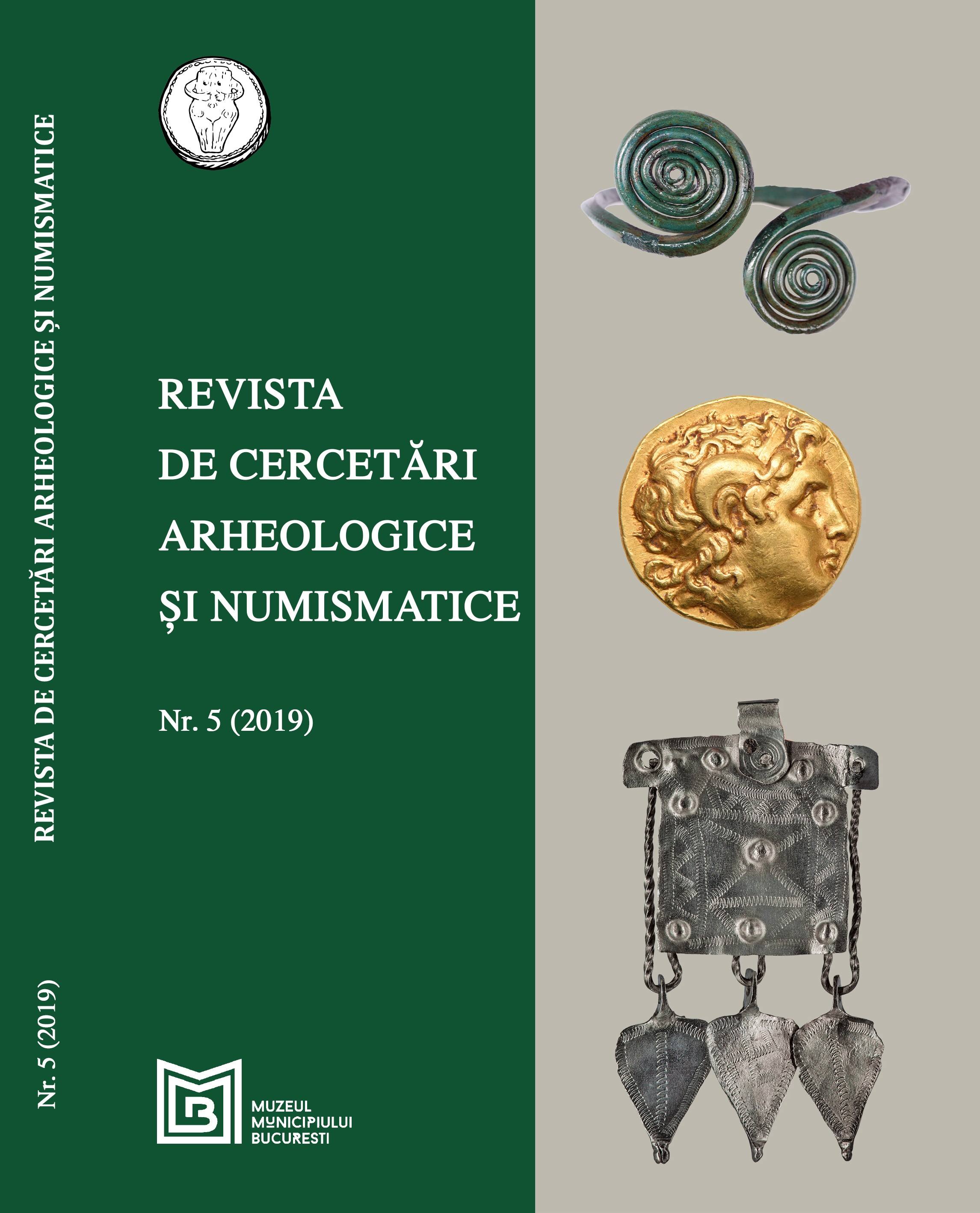
Keywords: Callatis; Commodus; Histria; overstruck; countermark; Nicaea; Bithynia; Caracalla; Demeter; monetary reform; Septimius Severus; devaluation;
In this study, we aimed to focus on the coins from Callatis during the reign of Emperor Commodus. They are not well known, both in the specialized literature and in the monetary discoveries. We have gathered 39 coins with the name of Commodus, to which are added three pseudo-autonomous Demeter type pieces overstruck, from the numismatic literature, from the former collections or the selection of the auction houses displayed on the internet. Based on them, we identified six superior denomination issues, accompanied by three low denomination issues, which are distributed as it follows, by virtue of the stylistic analogies with the emperor's portrait on Roman sestertius's issues: first issue - years 177-180 (with his father, Marcus Aurelius, by virtue of the Lucius praenomen on the obverse); second issue - dates from 180, when he settles as unique emperor of the Roman Empire; third and fourth issues - appear to be struck between the years 181-183; fifth issue - is the most abundant issue, to which we add also low denomination pieces of Aphrodite and Priapos types, as well as Eros / Thanathos type, towards the year 185; sixth issue - between the years 188-189, concurrently with it, pieces of Eros-Thanathos type were also issued, in a very similar artistic style.In our group, there are three overstruck coins, one from Callatis, Commodus, the other being older issues from the Megarian city or even from elsewhere, maybe Histria, from the same period. They were overstruck with a new image, the veiled bust of Demeter with crown of wheat, which in the Callatis iconography is associated with the coins of 3 assaria. We should note the intentional application on the obverse of an image signifying a certain monetary value (Γ), 3 assaria, on a piece with the imperial title, which valued more as metal, being the equivalent of 4 or 5 assaria. The very good state of conservation of the piece from Commodus (pl. IV, 40) determines us to consider that the process of overstriking took place after a few years since its issue. The overstriking operation was intended for some older issues, especially for those with the Commodus portrait; it took place at one point, being determined by certain political and economic causes. This moment could be located after the end of Commodus's reign in 192, when the emperor is the subject of a damnatio memoriae because of his extravagant behavior. On the other hand, this operation of overstriking the old bronze coins, which no longer corresponded to the political situation, is understood to take place sooner after the installation of Septimius Severus on the imperial throne and the initiation of monetary reform after the end of the civil war (194). Probably it happened with the striking of new issues with the portrait of Septimius Severus; in this context, a forced lower rate is imposed for the older coins. At the same time, at this moment can be situated the striking of a new series of pseudo-autonomous Demeter type coins (pl. V, 41-44), which present stylistic features very similar to the model applied on the Commodus coin from Callatis.
More...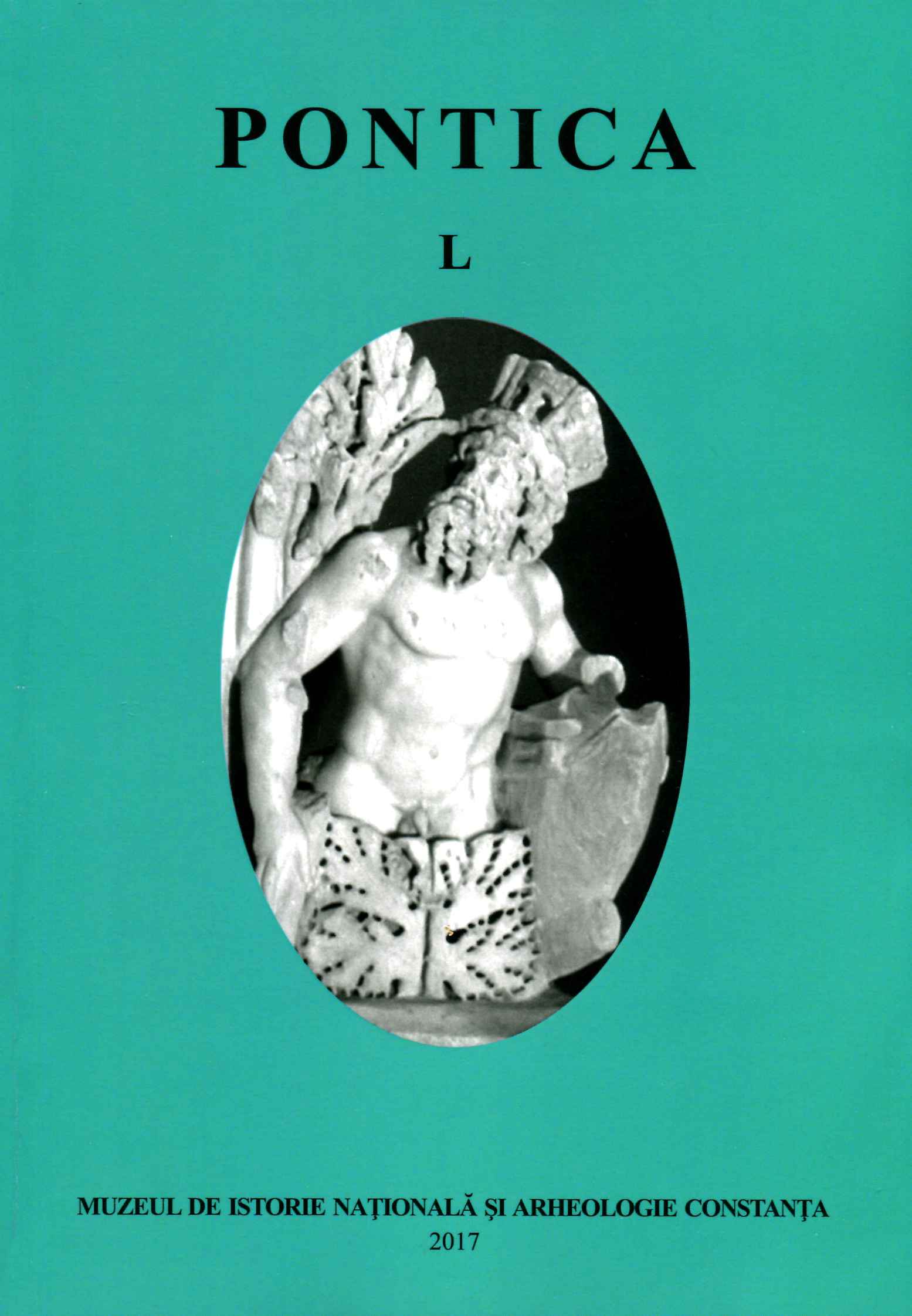
Keywords: cartography; historical geography; al-Idrīsī; Bulgaria; Dobrudja; Byzantine Empire; Vicina; Chilia; Cetatea Albă; Cenad; Timişoara; Alba Iulia;
The study discusses the previous Romanian contributions to the problem,many of them flawed by the perpetuation of some mistaken identifications, such as Disinafor Vicina. The present commentary is based on the latest translation of the source. The conclusion is that no place was recorded by the geographical treatise of al-Idrīsī in Dobrudja, except Dristra. Armkastrou was certainly somewhere on the Bulgarian shore, maybe at Kaliakra, not Enisala, as even up to recently it was maintained. Not even Chilia could be identified with Aqiliyya (which could be more probable Cetatea Albă). This ignorance about what we call now Dobrudja meant that the region was then out of the journeys made by the merchants, the informers of al-Idrīsī. In that time, the region was gravely depopulated and thus with no interest for trade. In the last part of the study are discussed the data about Cenad, Timişoara and another place which could be identified with Alba Iulia.
More...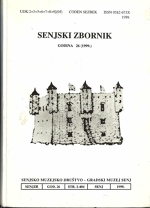
Keywords: Vitezović; Revived Croatia; inheritance; count L. F. Marsiglio;
Historiographic work of Pavao Ritter Vitezovic requires, due to its far-reaching effects on the Croatian modern political thought, a complete analysis and re-valuation congruently with the postulates of the up-to-date historical science. The first step was made by publishing the two critical editions of Vitezović's translation of the programmatic paper Croatia Rediviva. One copy of the Revived Croatia has been preserved in the inheritance of the count L. F. Marsiglio at Bologna, but it has never been elaborated in a scholarly manner to this day. It differs from the two copies kept in Zagreb by an appendix of 26 pages, where there are descriptions of the geneaology, coats of arms and genealogical trees of the noble families Makar, Vojnovic and De Molli. The copy from Bologna is most probably the same one for which is known that it was Vitezović's present to count Marsiglio and geneaologies displayed therein were intended just for that reader. By analyzing the formal and substantial characteristics of the three geneaologies, we become aware of a somehow significant influence of the Orbini's geneaologies from the third part of his Kingdom of Slavs on the conception of the Bologna Appendix. By looking on it in the whole, the copy of the Revived Croatia from the inheritance of count Marsiglio has been an important contribution for the judgement not only of Vitezović's literary and publishing work, but also for the history of the geneaology and heraldry with the Croats.
More...Keywords: Fra Mauro; Balkan Peninsula; Serbia; historical geography; historical cartography; toponomastics
Fra Mauro's world map was created in the middle of the 15th century and at that time it represented a great progress in relation to Ptolemy's geographical and cosmographic representations, which until then had been the starting point for every geographical discourse. This map is one of those epochal works from the era of Humanism and the Renaissance, which illuminated the world with new light and thus moved scientific thought forwards. Fra Mauro's map represented the affirmation of geography and cartography, which at that time had not yet been constituted as sciences, and directed at new geographical discoveries and research. The aim of this paper is to analyse the geographical representations of the Balkan Peninsula on Fra Mauro's map. This paper provides the toponym list of the Balkan Peninsula and some surrounding areas and countries, systematised in its original form and identified in its current meaning. Special attention is given to the identification of the map as a text document, as well as to the explanation of the context, symbolism and contemporary meaning of certain geographical names.
More...
Keywords: funerary archaeology; atypical burials; Middle Ages; marginalization; stigma
The research into the Medieval necropolises in the territory of present-day Serbia has estab-lished a relatively standardized mode of interment of the bodies of men, women, and children. The deceased were laid supine oriented west to east, with their head to the west. This paper ad-dresses the deviations from this practice recorded in the necropolises dated into the period from the 10th to the 15th centuries. The evidence is critically discussed on the individuals oriented con-trary to the established standard, the ones buried in the foetal position, the deceased thrown into the burial pit or laid prone, facing downward.The aim of the paper is to raise the question who were these people, deprived of the prescrip-tive Christian funeral and the adequate treatment of their bodies in death. The research is based on the precept that there is a correlation between the persons laid in extraordinary positions in their graves, and the outcasts, stigmatized and marginalized individuals.The paper is based upon the theoretical basis that postulates the burial and the treatment of a dead body as the community’s encounter with a social loss and the additional unwanted out-come of death – the cadaver. Additionally, the modes of marginalization and the generation of the marginalized in a society through the deprivation of a decent burial are discussed from vari-ous perspectives, starting with the ideas of Robert E. Park, Erving Goffman and Elisa Perego.Regardless of the fact that the phenomenon of the atypically buried individuals has not been duly investigated in the Serbian Medieval archaeology, the analysis of the evidence shows that contexts corresponding to this type are registered at no less than 19 sites. In order to offer a more precise answer to the question which of these individuals have indeed been marginalized and why, it is essential to conduct physical-anthropological analyses, present in only two in-stances treated here.Considering the quality of the data at the disposal, the paper reaches the conclusion that the individuals laid contrary to the norm (with the exception of children), thrown into the burial pit, or laid prone facing downward, are indeed the marginalized ones. Particularly are indicative the situations where more than one parameter of stigmatization is present in one funerary context. The suggestion is put forward that the flexed individuals laid in foetal position are the ones who could not have been laid prone due to some illness, such as muscular atrophy of paralysis. The extraordinary treatment of some new-borns and children, buried under the stećci, raises the issue of the social position of children in this cultural context.In spite of the limitations of reinterpretation of old evidence, the potential is demonstrated of the research integrating various lines of evidence: archaeological, physical-anthropological, eth-nographic, historiographic, and legal-historic.
More...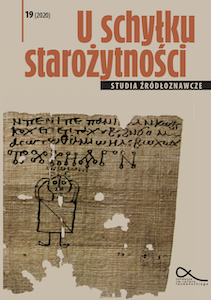
Keywords: Slavs; ethnogenesis; history of historiography; methodology of historical studies; historical source; Marian Plezia; Gerard Labuda; Henryk Łowmiański; Lech Tyszkiewicz;
More...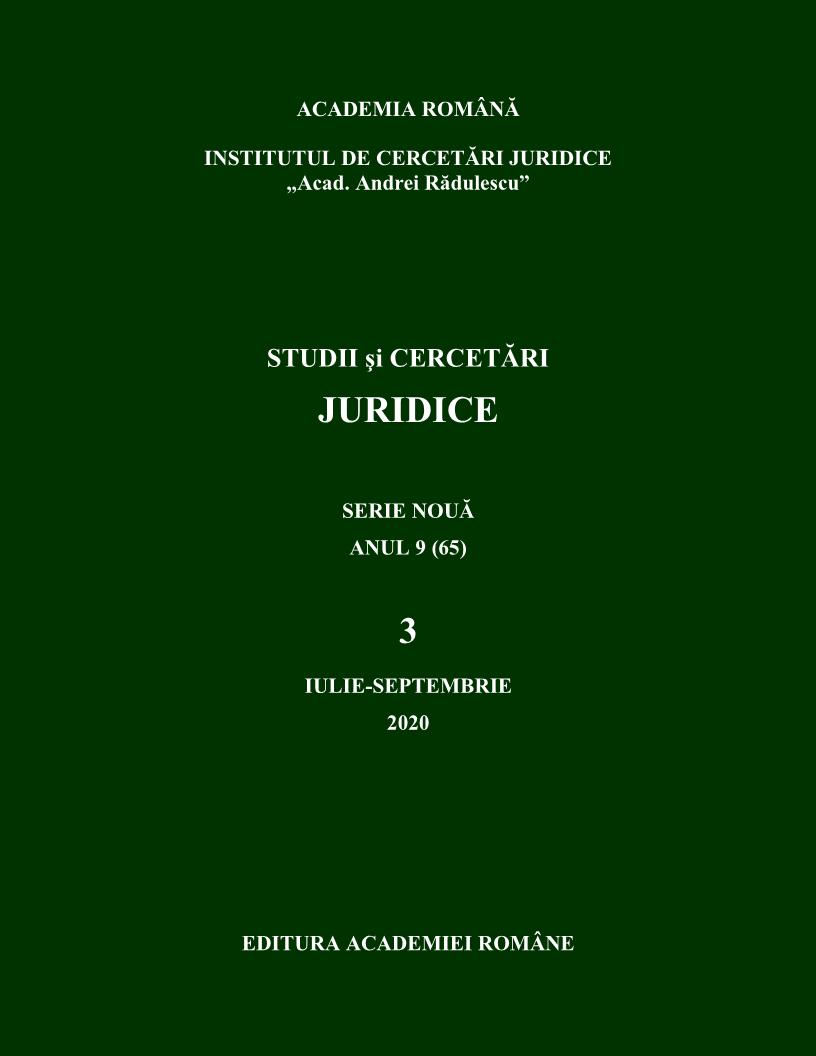
Keywords: money laundering; autonomous offense; material object; archeological goods; amounts of money; false origin, private collections pieces; ne bis in idem; civil damages;
Money laundering - autonomous offense. Material object of the offense: archeological goods and amounts of money subject to a recycling process. Material element of the objective side. Alternative ways of committing the offense through acquiring and illegal placing, on the legal antiquities market, as well as changing and transferring through sales, goods previously stolen from archeological sites, while knowing they were the product of qualified theft of goods pertaining to the national cultural heritage, unauthorized for export. Subjective side, difference from concealment. Changing or transferring cultural goods, while kowing they are the product of certain offenses, with the purpose of concealing the illicit nature of these goods through forgery and attributing a false origin, as pertaining to private collections - or with the purpose of helping the author of the offense from which the goods originated to evade prosecution, judgement or execution of the sentence; acquiring, holding or using goods by another person beside the active subject of the offense from which the goods originate, while knowing they are the product of crime. The civil side. Oligation of the defendant to pay the civil damages consisting of the expenses made by the Romanian State as compensation for the repatriation of the artifacts that were stolen, acquired and illegally transferred on the antiquities market. Special confiscation of the product of the crime: archeological artifacts - bronze tables of Roman laws and a lot of Koson gold coins - stolen from sites and recycled as pieces of private collections; money resulted from the valorisation of the stolen artifacts. Ne bis in idem? Decision to end the criminal trial – given by the judicial control court, based on the wrong ascertainment of the inexistance of the special prescription institution of criminal liability. Instruments of international judicial cooperation: European Evidence Warrant (EEW), UNIDROIT Convention. Content analysis of the legal document Lex municipalis Troesmensium. (Alba Iulia Court of Appeal, Criminal Section, decision no. 333/11.06.2020, pronounced in the file no. 1335/97/2017*).
More...